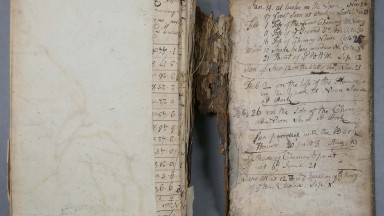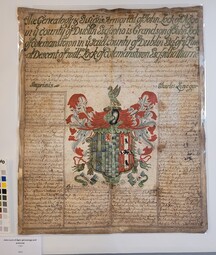MS 2104 is a volume of manuscript maps, dated c. 1750. It could be described as an album, or an atlas, as it contains 35 maps, one for each county or province of Ireland. The author of the maps is unknown, but the loosely sketched maps could be based on the printed publication ‘New map of Ireland’ by Hermann Moll and Henry Pratt published in 1715[1].
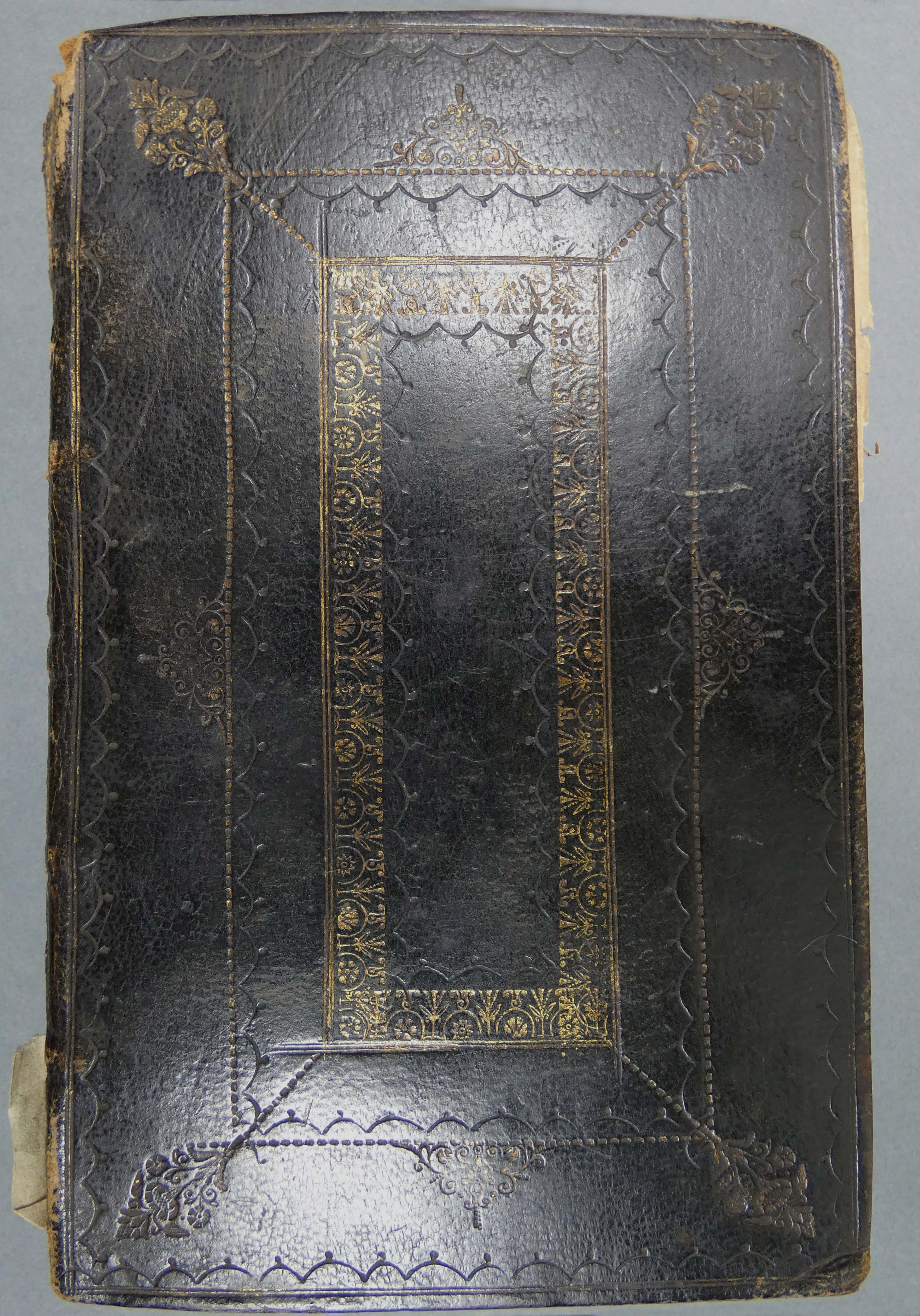
The cover of the binding is made with cardboard boards and toned black leather, with decorative gold and blind tooling. The cover was reused from another book; the covers are too short and do not fully protect the maps. The spine of the text block has no traces of adhesive, which further indicates it has been recycled.
Each map was drawn with ink and a writing quill on a single sheet of paper. Then it was folded, and mounted onto paper guards to form a quire. What makes this album of maps very interesting is the sewing technique, it isn't a traditional one. In fact, the binder, perhaps the owner of the maps, made one independent sewing for each quire, using a basic pamphlet stitch. Then each quire was attached independently to the cover by a loop sewing going through the leather. What’s more, there isn’t a spine lining, nor are the boards attached as is usually found in a book made by a professional bookbinder.
MS 2104 is a scholars binding
A scholars’ binding is a homemade book, most often made by the scribe [2]. There are seven characteristics to help us identify a scholar’s binding, which we see in MS 2104:
"- handmade books in the post vellum era
- manuscripts written on paper
- made by a non-professional bookbinder
- non-standard binding structure
- non-traditional or discarded material
- non adhesive structure, main attachment through lacing or sewing
Over 65 scholars’ bindings have been identified from the 18th and 19th century in NLI Special Collections, and now MS 2104 can join the list. More examples can be found in the Special Collections and Archives, Glucksman Library in University of Limerick[4].
Condition report and treatments
The manuscript was in poor condition and presented several important structural issues. It wasn’t accessible to readers because handling might result in more damage. The text block was dusty, and each map had lots of tears, losses, and creases. The guards were in bad condition and some maps were detaching. The text block was no longer attached to the cover and the sewing of most of the quires was broken. The leatherback spine had lots of tears and losses due to the tension of the threads going through the leather.

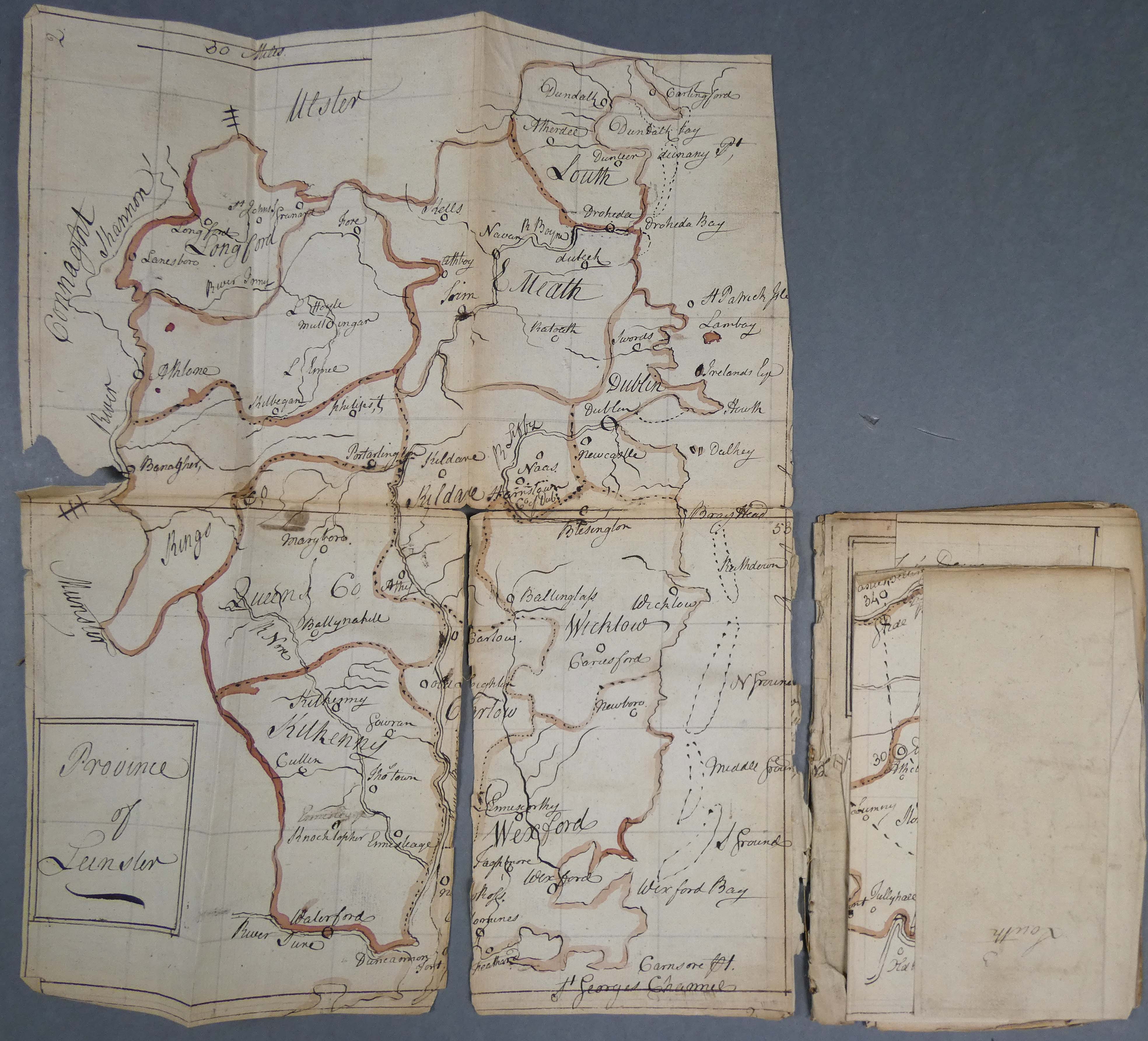
Following documentation, I started treatment, first focusing on the maps. I removed the dust with a smoke sponge and flattened the creases. Then I repaired the tears and loses with Japanese Kozo paper strips adhered with 3% cold sieved gelatin.
Next I added a new sewing to each quire reusing the original holes and preserving the original broken thread in the centrefold.
I created separately a primary cover which is also a sewing support made with a lining of cotton and paper, using an acrylic adhesive (Lascaux 498 HV). Then I sewed each quire to the new cover with hemp thread, re-using the original holes. During this step I didn’t use any adhesive on the spine. Lastly, I created a thick handmade paper wrap cover to protect the maps.

Next, I treated the original leather cover. I opted for the archaeological approach which emphasises minimum intervention, one of the foundations of conservation ethics. As the leather supports traces of the original sewing we decided not to hide it with repairs, even if the result is noticeable. I applied small local repairs with alum tawed gold beater skin (dried and cleaned bovine gut) and sturgeon bladder glue to reinforce tears in the leather. Lastly, the conserved cover and the new text block were stored in a custom fit conservation box.
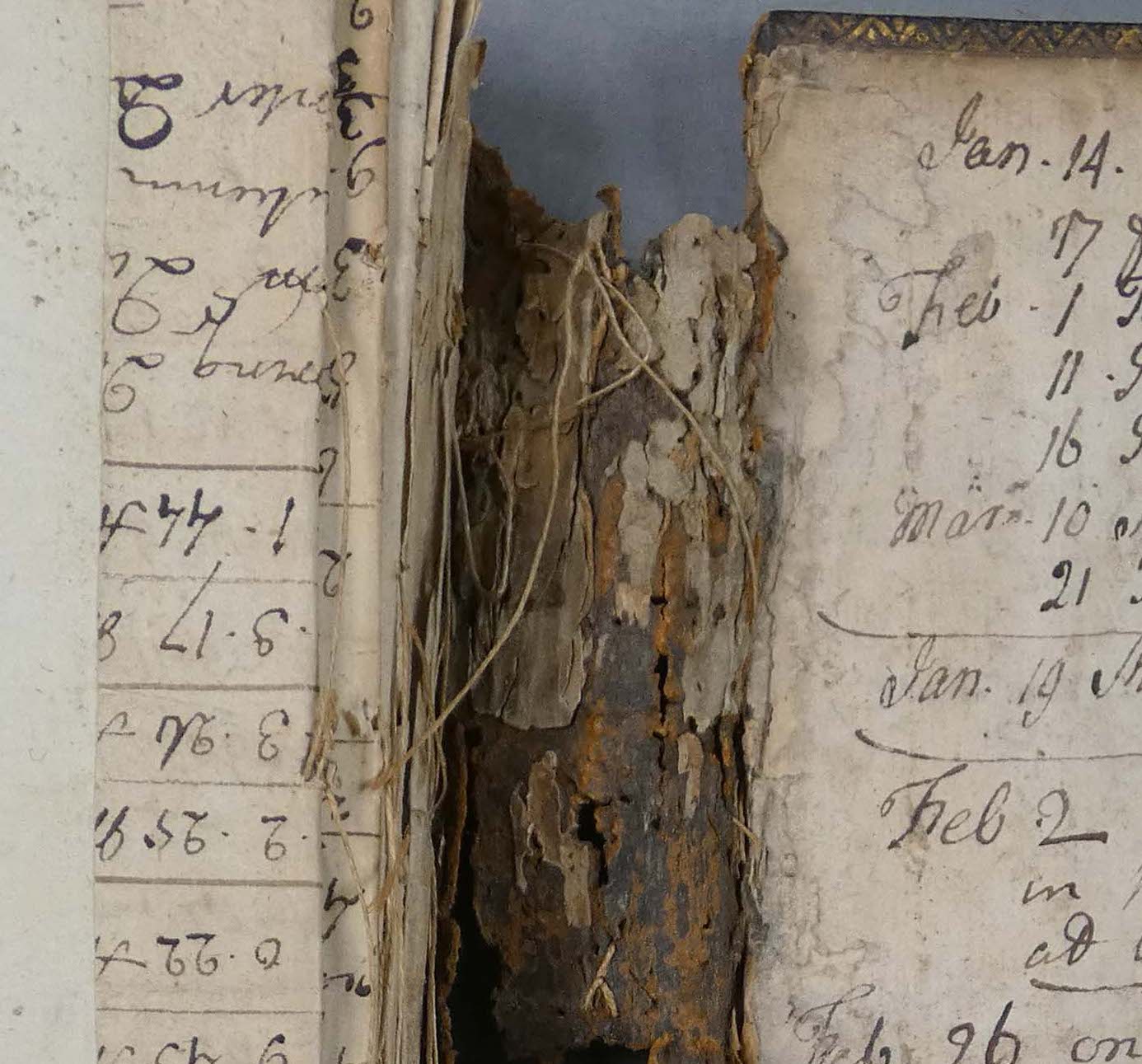
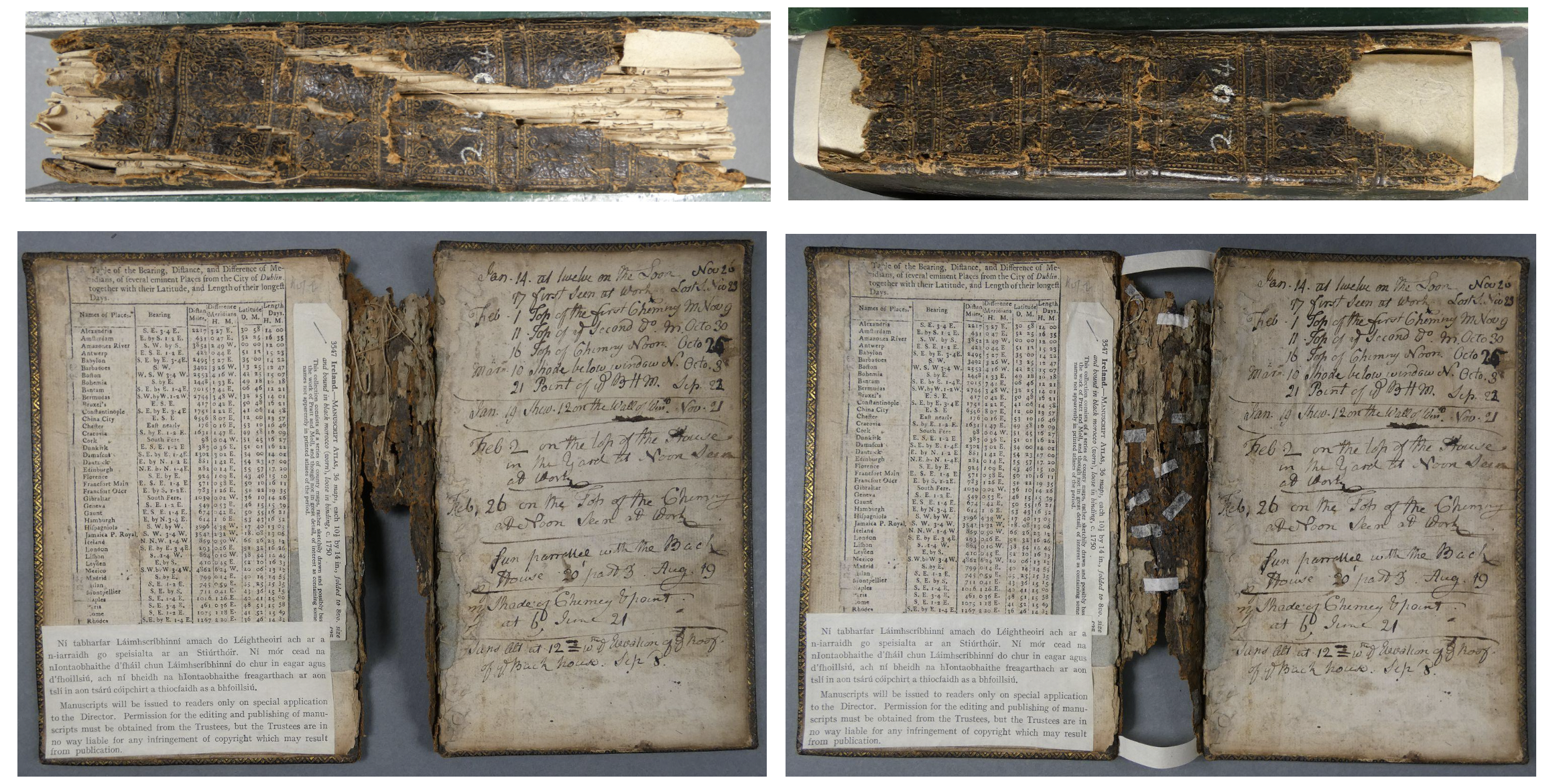
Consolidating major structural issues with minimal intervention is always a challenge and the conservation treatment of MS 2104 is a good example.
-----
Written by Nina de Angelis, conservation intern 2021-22
The conservation internship scheme is supported by the Heritage Council and the NLI. Learn more about studentships at the NLI here.
-----
[2] E Lévêque, ‘Notes on Scholar’s Bindings and the archaeology of some 18th and 19th century Gaelic manuscripts in the National Library of Ireland’, in P. Ó Macháin (ed.) Paper and the paper manuscript: a context for the transmission of Gaelic literature (Cork, 2019), 86–94
